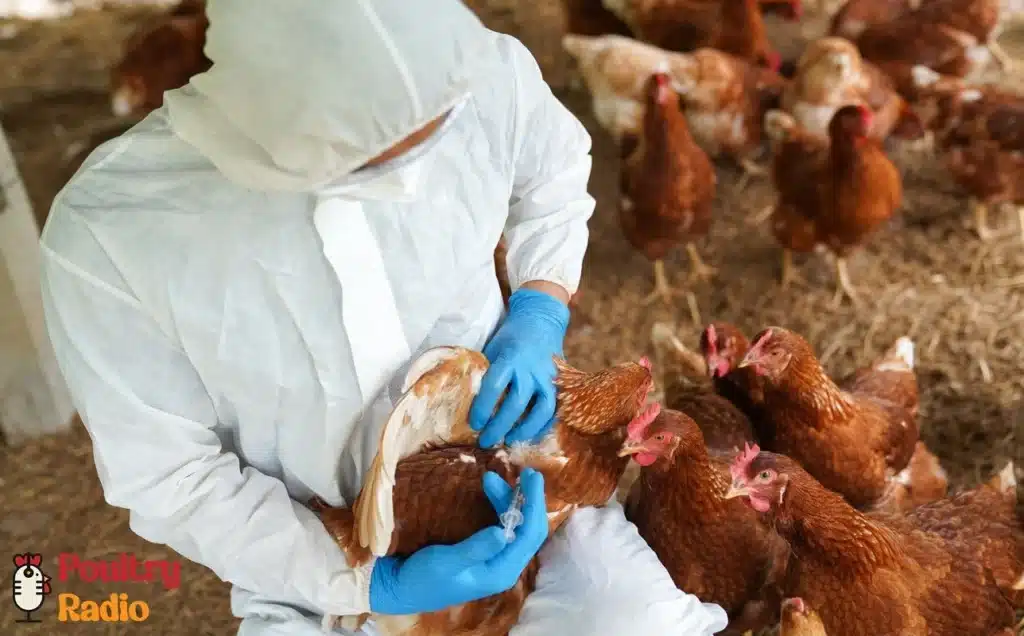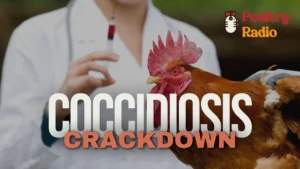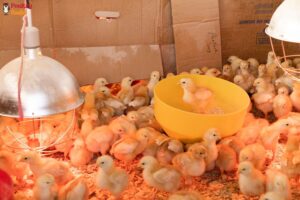From Chickens to Humans: The Story of Zoonotic Disease Transmission
A disease that can be transmitted from animals to humans is known as a zoonotic disease. These diseases may be caused by fungi, bacteria, viruses, or parasites.
Humans can get zoonotic or vector-borne diseases by coming into contact with an animal, its bodily fluids, its infected waste, or its living environment; by coming into contact with contaminated water or soil; by eating meat from infected animals; or by eating food, such as fruits and vegetables, that have come into contact with infected animal waste. Alternatively, humans can contract diseases through vectors, which can be transferred from infected animals to humans by mosquitoes, fleas, or ticks.
Zoonotic Diseases Significance to Human Health
There are several reasons why animal health and disease issues are so important.
Man’s relying on animals for food and other health and recreational benefits, such as carrying loads, providing transportation, using horses for sports and combat, and other purposes.
The human population is growing every day, leading to an increased demand for food. This necessitates expanding food production into new areas, including domestication and farming game animals such as deer, antelopes, and grass-cutters. Additionally, non-poultry birds like pheasants, cockericks, and bush fowls, as well as micro stocks like snails, can be raised to supplement food supply.

Contact with wild animals increases the risk of contracting diseases that were previously uncommon zoonotic infections in both humans and their domesticated animals.
Growing human-animal contact is a factor in the zoonotic disease epidemic. Urbanization, rapid development, and faster modes of transportation like air travel are all contributing to the global and local spread of zoonotic diseases.
Zoonotic Diseases Significance to Animal’s Health
A healthy animal lowers or avoids the increase in production costs and the infection of the human handler(s), which would have otherwise decreased the productivity or availability of labor for production. A healthy animal provides man with extra health benefits, particularly in terms of zoonotic diseases, and is also an adequate food source.
There are two main ways that diseases can spread from poultry to humans. One is contracted by being in close contact with live birds, while the other is contracted through ingesting meat or egg products from infected birds or exposure to them.
The zoonotic diseases that affect birds are:
- Avian Influenza (H5N1)
- New Castle disease
- Avian tuberculosis
- Salmonellosis
- Cryptosporidiosis
- Psittacosis
- Ornithosis
- E. Coli
A few Poultry Zoonotic Diseases are discussed below:
Bird Flu (Zoonotic Avian Influenza)
Bird Flu is at the top of the list of zoonotic threats, If only due to significant international zoonotic events during the past ten years. One would need to be extremely isolated from current events not to have come across news stories regarding the “bird flu” and its impact on human lives.
Understanding Regarding the Influenza Virus.
Influenza viruses may seem like an alphabet soup with their complex classification system. They are initially categorized into types A, B, or C. Type A encompasses most human influenzas and is also the sole type found in most domestic animals, including birds.
All influenza A viruses boast two main proteins – hemagglutinin (H) and neuraminidase (N). The hemagglutinin protein comes in 17 varieties, while the neuraminidase protein has 9 varieties. Consequently, influenza A viruses are classified based on their specific H and N types, resulting in the H#N# designation, or subtype. Unlike other animal classes, birds can be infected with all possible combinations of H and N, leading to a total of 153 influenza A subtypes. Most of these viruses don’t make the birds sick, so they’re called “low pathogenic avian influenza” (LPAI) strains.
Some of these “low pathogenic avian influenza” viruses can infect poultry, and within poultry, they have been known to change to become more harmful. So, a “low pathogenic avian influenza” can turn into a “highly pathogenic avian influenza virus” and cause disease.
To this day, all of these highly dangerous viruses have been either of the H5 or H7 subtypes. This means that any H5 or H7 viruses found in birds are considered “notifiable” because of the chance that they could change and become harmful, leading to the death of poultry. Instances of highly pathogenic avian influenza (HPAI) in poultry occur from time to time. Affected poultry will die quickly, often within 48-72 hours of getting infected.
Zoonotic Effect of Influenza Virus
In 1997, the global community took significant notice when an H5N1 virus was discovered in a sick boy in Hong Kong. It was particularly noteworthy as H5 subtypes are typically associated with birds and not known to infect humans. Subsequently, a strain of this virus, or a closely related one, spread through poultry across Asia, much of Africa, and eventually Europe. The outbreak resulted in over 600 human infections, with a mortality rate of 59%. Most of those affected had close contact with poultry or were intimate family members of sick individuals. The disease in humans resembled that in birds, leading to multi-organ system failure, often culminating in the development of acute respiratory distress syndrome and respiratory failure. While H5N1 persists at a minimal level, international efforts have largely contained its spread.
It is important to remember that the Americas have never experienced an H5N1 virus outbreak.
Multiple subtypes of avian influenza viruses, including H5N1, have been documented as causing infections in humans. The H7 subtype has been responsible for several human infections and was classified as highly pathogenic avian influenza (HPAI) due to its high virulence in poultry. Additionally, the H9 subtype has sporadically infected humans, causing respiratory issues but no fatalities. These viruses were of the low pathogenic avian influenza (LPAI) variety. Of current concern is the newly identified LPAI H7N9, which, within just one month of its discovery in China, resulted in 129 human cases with an 18% mortality rate. This specific strain, being LPAI, does not exhibit obvious clinical signs in birds, making it challenging to detect infected birds. Human cases were reported in multiple provinces, with most individuals having had contact with poultry. The number of new cases developed at a slower rate after the live bird markets were closed.
New Castle Disease
New Castle disease has the potential to spread to humans, but it’s not as serious for humans as avian influenza. Several decades ago, the New Castle disease virus was first recognized as a human zoonosis. While there have been occasional cases of mild, self-limiting infections in poultry workers and researchers, it’s fortunate that the virus does not pose a significant or severe threat to human health, and there have never been reports of human-to-human transmission.
Clinical infections in humans typically occur from accidental exposure to vaccines or fluids from infected birds or carcasses. Symptoms often include conjunctivitis, which can develop within 24 hours, sometimes accompanied by watery eyes, swollen eyelids, pain, and, in rare cases, fever, chills, loss of appetite, and sensitivity to light.
Recently, a transplant patient developed severe interstitial pneumonia caused by this virus, possibly due to their strong immunosuppression. Additionally, current research is focusing on the potential of the New Castle disease virus to induce apoptosis in various human cancer cells, such as those found in prostate and breast cancer. It is anticipated that further exploration of the New Castle disease virus will uncover opportunities to harness its oncolytic properties for human tumor immunotherapy.
Avian Tuberculosis
Mycobacteria in birds: can it spread to humans? Yes, but not very frequently. Worldwide, Mycobacterium avium infections are present in a wide variety of birds, including wild and zoological species, poultry, and game birds. In the world of poultry, avian tuberculosis, which is caused by M. avium serovars 1, 2, and 3, is mainly found in mature backyard birds. Thanks to modern management practices, it’s now rarely seen in commercial flocks. The bacteria in birds first appear as yellow to white tubercles in the small intestine later moving on to other organs, including the spleen, liver, and bone marrow. This leads to emaciation and finally death from a progressive granulomatous disease.
Human infections with M. avium from birds are extremely uncommon in immunocompetent individuals. They most frequently affect immunocompromised people, such as those with HIV/AIDS.
Salmonella
In many people’s minds, Salmonella is commonly associated with “chicken”. Chickens can carry various types of Salmonella, most of which can make humans sick. Some types, like S. pullorum and S. gallinarum, only affect chickens and don’t infect humans. But many other types can live in chickens’ intestines or reproductive systems without causing harm to the chickens, yet can be passed into their feces or eggs and cause serious diseases in humans. For example, Salmonella typhimurium and Salmonella Heidelberg can infect without causing any apparent disease and then spread to other hosts, including humans, causing disease.
Poultry Meat Contaminated with Salmonella
Problems can arise during the slaughtering process when contents from the digestive system contaminate the carcasses. Additionally, if proper hygiene measures are not followed during food preparation at home, there is a risk of transmission to humans, potentially leading to serious diseases. A national study examining chicken carcasses in 15 different cities in Brazil found that 2.7% of the carcasses contained Salmonella spp. Furthermore, the study identified eighteen different zoonotic serotypes. Particularly concerning was the finding that 53% of the cultured strains were resistant to one or more antibiotics.
How can Salmonella be transferred to humans through eggs?
A female chicken may carry Salmonella enteritidis in her reproductive tract without showing any symptoms, but the bacteria will be transferred into her eggs and will cause disease in humans. Through cooking these bacteria can be killed. Problems with human disease come from uncooked egg products in food, such as eggnog or Caesar salad dressing.

Salmonella bacteria, once in the human gastrointestinal tract, have a survival strategy that enables them to persist, enter epithelial cells, and evade host destruction. This organism triggers secretory diarrhea and damages the epithelium, resulting in ulcers and effusive diarrhea. Salmonella’s endotoxin leads to cytokine activation and may cause septic shock. These issues are all related to food-borne problems. However, Salmonella infections, including extensive outbreaks, have also been documented from contact with live chickens, especially from mail-order hatcheries.
Preventions and Control
Transmission of zoonotic diseases from animals mainly through direct contact, indirect contact with inanimate objects contaminated by insects, ingestion of aerosolized materials, or inhalation of those particles.

The majority of diseases can be prevented by following these simple hygiene practices:
- When working with animals or in areas where animals are housed, avoid eating, drinking, applying cosmetics, and using tobacco products.
- When necessary, put on respiratory protection.
- Wash your hands after handling animals and make sure you wear gloves when handling animal tissues, bodily fluids, and waste.
- When working with animals, wear appropriate safety clothing like coveralls or a lab coat. Wash the soiled clothes somewhere other than your clothes, preferably the animal facility.
- If you use equipment on animals or in animal areas, make sure it is cleaned and disinfected.
Most importantly, educate yourself on the species of animals you will handle and any potential zoonotic diseases connected to them. If you think you may have contracted a zoonotic disease at any point, tell your supervisor and get medical care.
FAQs
What is a Zoonotic Disease?
A disease that can be transmitted from animals to humans is known as a zoonotic disease. These diseases may be caused on by fungi, bacteria, viruses, or parasites.
What are 10 Zoonotic Poultry Diseases?
Multiple pathogens can cause zoonotic diseases. Zoonotic diseases are classified into the following categories: bacterial (such as anthrax, salmonellosis, tuberculosis, Lyme disease, brucellosis, and plague), viral (such as avian influenza, AIDS, Ebola, and rabies), parasitic (such as trichinosis, toxoplasmosis, trematodosis, giardiasis, malaria, and echinococcosis), or fungal (like ringworm) based on their cause.
Why do Zoonotic Diseases happen?
Man’s relying on animals for food and other health and recreational benefits, such as carrying loads, providing transportation, using horses for sports and combat, and other purposes. Contact with wild animals increases the risk of contracting diseases that were previously uncommon zoonotic infections in both humans and their domesticated animals. Growing human-animal contact is a factor in the zoonotic disease epidemic. Urbanization, rapid development, and faster modes of transportation like air travel are all contributing to the global and local spread of zoonotic diseases.
Can Chickens cause Respiratory Problems in Humans?
Poultry dust causes a respiratory hazard. People who work with chickens frequently report a range of respiratory symptoms, such as coughing, eye irritation, breathing difficulties chest tightness, nasal congestion, and wheezing.
Is Covid 19 a Zoonotic Disease?
Several strains of swine and avian flu have emerged from zoonotic origins. Due to the dynamic equilibrium of host-pathogen interaction from an evolutionary standpoint, more time is required to comprehend the pathogenic nature of COVID-19. According to published data, COVID-19 is undoubtedly a zoonotic disease.







